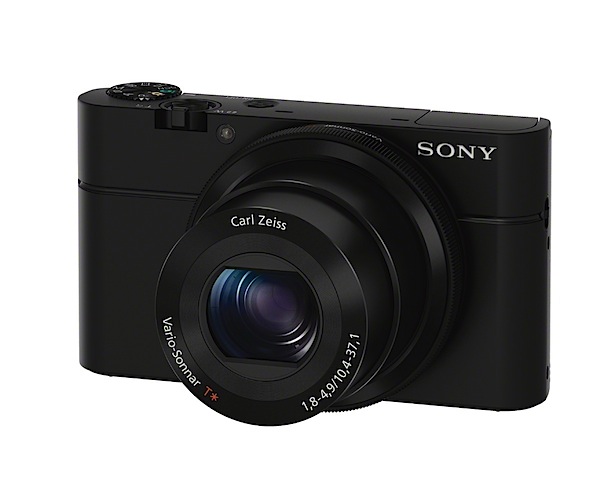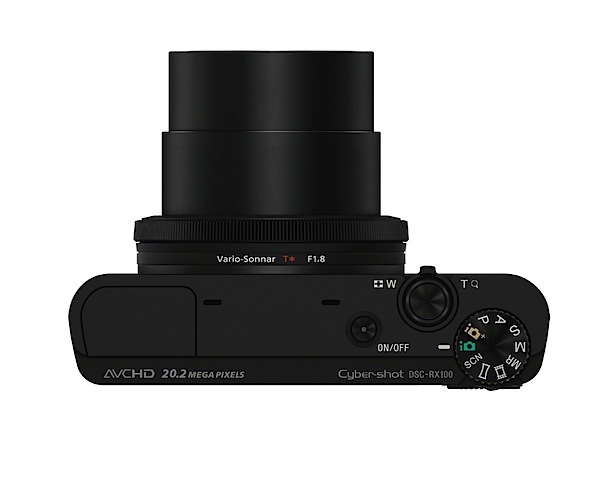It’s a big claim: “The best pocket camera ever made.” … or so The New York Times declares. No doubt there will be some rumblings from a well-known German company about such a contention. And Nikon will be banging at the gate too!
(insert Productshot_Front_007-1200)
Sony’s story is that the RX100 does do things quite a bit differently from the rest of the crowd. For one thing, as a fixed lens camera, the sensor is claimed to be considerably larger than the rest of the crowd, with many having 11mm sensors (as a diagonal measurement). Sony claims the RX100′s sensor is a one inch job.
Screeech! Reality check! The RX100′s CMOS measures 13.2×8.8mm, which means the diagonal is only 15.8mm and not 25.4m (one inch) … same as the Nikon V1and N1 cameras.
It gets stickier. The RX100 has 20.2 million effective pixels, while the Nikons offers only 10.1 million packed onto the sensor. Same space: smaller pixels. Not a good start!
Well I’ve got that off my chest.
Now let’s look at the lens. At last! A star! One of dear old Carl Zeiss’ top optics: the Vario-Sonnar T* f1.8-4.9/10.4-37.1mm job. Yes, it’s relatively fast at f1.9, but this drops off to a much smaller f4.9 at the tele end, giving a modest 3.6x zoom range (based on the 35 SLR equivalent range of 28-100mm).
Sony Cyber-Shot RX100 Features
Built around an aluminium body, the camera inherits some features from Sony’s Alpha range of cameras which places it in the same territory as the mirrorless interchangeable lens cameras.
Although small, the RX100 feels chunky, solid and workmanlike, while feeling surprisingly heavy for such a small camera. Powered down, it fits a pocket easily. Powered up, the lens protrudes another 3.5cm from the 3.5cm deep body.
It feels good in the hand, although I would have liked a textured grip surface at the front right edge, as there is at the rear edge.
Controls are very Sony-like: power, zoom and mode dial on top; the rear has a Function button (HDR, scene modes, exposure compensation, ISO), with controls for menu, replay, instruction guide and the movie record button.
There is a USB port at the camera’s right end with the mini HDMI and memory card access placed in the camera’s base.
At this point I should mention the lens control ring, close to the body and giving direct access to aperture, shutter speed and manual focus … all operable with the camera in Program AE, shutter or aperture priority and visible on the LCD screen. Pretty neat!
Source











 Reply With Quote
Reply With Quote


Social Networking Bookmarks